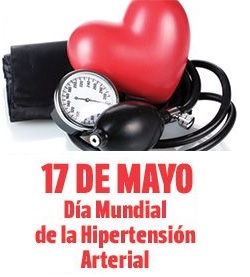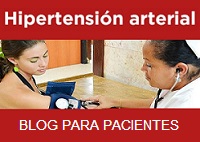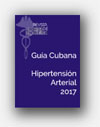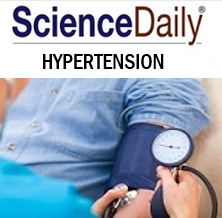Estudios -Epidemiológicos de la presión arterial sistémica sistemica en adoloscentes del municipio Santa Clara, Santa Clara 2011.
Por: Dr. Guillermo Alberto Pérez Fernández.
Método robusto de medición de la Presión Sanguínea Arterial en niños. Santa Clara 2008
Por: Dr. Sergio de Jesús Rodríguez Arias.
Aportes al estudio de la hipertensión arterial en Cuba. La Habana 2008
Por: Dr. Manuel Delfín Pérez Caballero
Comparación de dos estrategias de tratamiento en el control ambulatorio de hipertensos con cardiopatía isquémica. La Habana 2005
Por: Dr. José Ernesto Groning Roque.
Visit-to-visit systolic blood pressure variability and outcomes in hemodialysis
 Por: T I Chang, J E Flythe, S M Brunelli, P Muntner, T Greene, A K Cheung y G M Chertow. Journal of Human Hypertension (2014) 28, 18–24.
Por: T I Chang, J E Flythe, S M Brunelli, P Muntner, T Greene, A K Cheung y G M Chertow. Journal of Human Hypertension (2014) 28, 18–24.
Visit-to-visit blood pressure variability (VTV-BPV) is an independent risk factor for cardiovascular events and death in the general population. We sought to determine the association of VTV-BPV with outcomes in patients on hemodialysis, using data from a National Institutes of Health-sponsored randomized trial (the HEMO study). We used the coefficient of variation (CV) and the average real variability in systolic blood pressure (SBP) as metrics of VTV-BPV. In all, 1844 out of 1846 randomized subjects had at least three visits with SBP measurements and were included in the analysis. Median follow-up was 2.5 years (interquartile range 1.3 –4.3 years), during which time there were 869 deaths from any cause and 408 (adjudicated) cardiovascular deaths.
 Por: J Wang, X Ning, L Yang, H Lu, J Tu, W Jin, W Zhang y T-C Su. Journal of Human Hypertension (2014) 28, 25–31.
Por: J Wang, X Ning, L Yang, H Lu, J Tu, W Jin, W Zhang y T-C Su. Journal of Human Hypertension (2014) 28, 25–31.
This study aims to investigate the trends in prevalence, awareness, treatment and control of hypertension among rural residents aged 35–74 years in northern China during the country’s rapid economic development from 1991 to 2011. Two surveys, conducted in 1991and 2011, included 2196 and 1939 participants aged 35–74 years from same villages in Ji County, Tianjin of China, respectively. The prevalence of hypertension, adjusted by age and gender using the world standard population in 2000, increased 30% (39.9% vs 51.7%) between 1991 and 2011. Two surveys, conducted in 1991and 2011, included 2196 and 1939 participants aged 35–74 years from same villages in Ji County, Tianjin of China, respectively. The prevalence of hypertension, adjusted by age and gender using the world standard population in 2000, increased 30% (39.9% vs 51.7%) between 1991 and 2011. The increase was greatest (68%) in women aged 35–44 years.
En esta sección les exponemos algunos artículos publicados sobre la hipertensión arterial
 De la Revista: Nature Reviews Cardiology
De la Revista: Nature Reviews Cardiology
Renal sympathetic denervation: applications in hypertension and beyond
Por: Michael Böhm, Dominik Linz, Daniel Urban, Felix Mahfoud y Christian Ukena. Nature Reviews Cardiology 10, 465-476 (August 2013).
Key advances in antihypertensive treatment
Por: Ludovit Paulis, Ulrike M. Steckelings y Thomas Unger. Nature Reviews Cardiology 9, 276-285 (May 2012).
Vitamin D supplementation lacks benefit in systolic hypertension
Por: Gregory B. Lim. Nature Reviews Cardiology, 10, 615, 27 August, (2013).
Hypertension: Treprostinil therapy for PAH
Por: Gregory B. Lim. Nature Reviews Cardiology 10, 119 (March 2013).
Assessment and management of blood-pressure variability
 Por: Gianfranco Parati, Juan E. Ochoa, Carolina Lombardi y Grzegorz Bilo. Nature Reviews Cardiology 10, 143-155 (March 2013).
Por: Gianfranco Parati, Juan E. Ochoa, Carolina Lombardi y Grzegorz Bilo. Nature Reviews Cardiology 10, 143-155 (March 2013).
Blood pressure (BP) is characterized by marked short-term fluctuations occurring within a 24 h period, including beat-to-beat, minute-to-minute, hour-to-hour, and day-to-night changes. Long-term, substantial variations in BP have also been shown to occur over more-prolonged periods of time, for example days, weeks, months, seasons, and even years. Rather than representing ‘background noise’, or a phenomenon occurring at random, these variations are thought to be the result of complex interactions between extrinsic environmental and behavioural factors and intrinsic cardiovascular regulatory mechanisms (neural central, neural reflex, and humoral influences) that are not yet completely understood.







![Glosario: hipertensión [Hipertensión arterial en la atención primaria de salud. 2009]](http://temas.sld.cu/hipertension/files/2016/04/Glosario-e1541006177950.jpg)




Comentarios recientes